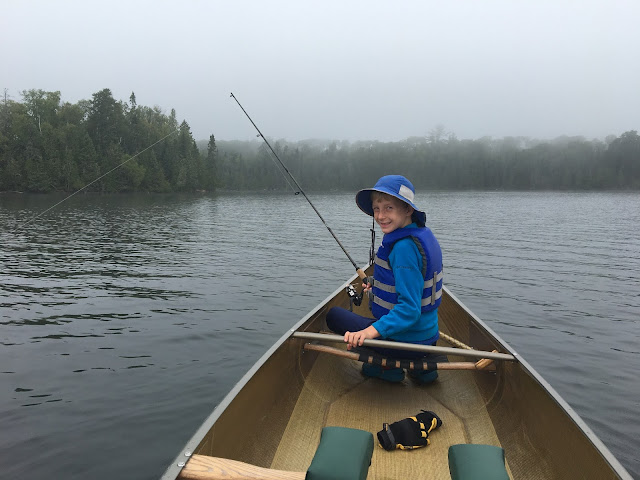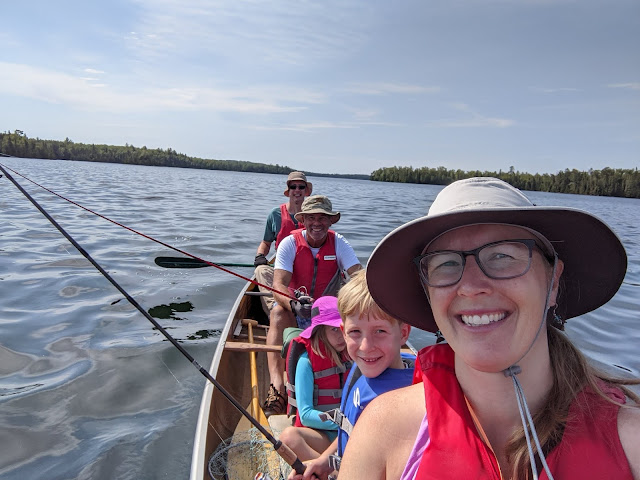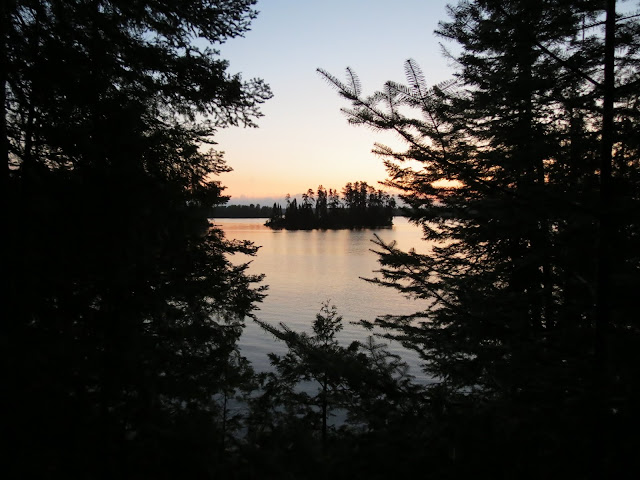BWCA - the best place to get away
ABC's of the BWCA: Alton Lake, Beaver dam, Canoeing, Dolmen rock, Eagles, Fishing for northern and walleye, Glass-like lake, Hunting for frogs and toads, Island campsite, Jumping off cliffs, Kelso Lake, Loons, Moon reflecting on the lake, Night sky and the Milky Way, Outfitter at Sawbill, Portaging, Quiet solitude, Rocky shore lined with tall pines, Swimming, Tipping the canoe, Un-plugged from devices/pandemic/news/social media, Views, Water, eXtra smelly latrine, Yummy s'mores, and lots of ZZZZs after a long day of paddling!
Whether it is your first time in a decade or your first time ever, the Boundary Waters Canoe Area (BWCA) does not disappoint! The BWCA is a large (1.1 million acre) wilderness area in Northern Minnesota and is a popular area to get away from the amenities of modern civilization. Ojibwe tribes have lived in these serene glacial lakes, calm streams and old forests for thousands of years yet these pristine waters are seemingly untouched. Starting in 1700s, British and French fur traders, called Voyageurs, started to paddle these lakes and cross the portages to trade (beaver) fur to make felt hats. Eventually, silk hats became more popular than felt hats in the 1820s and the nearly extinct beaver populations started to recover. Beginning in 1902, 500,000 acres in Northern Minnesota was set aside from mining, logging and homesteading but it wasn't until the last residents who were born in these areas before this died in the 1980s that they became truly uninhabited again. Fortunately, significant trail improvements were made along the North Shore in the 1930s during the time of the Civilian Conservation Corps (CCC), which enlisted thousand of men to build trails and improve signage on public lands, but it wasn't until 1964 when the BWCA was unofficially designated by President Johnson in the Wilderness Act. This act aimed to preserve the wilderness and prohibited use of motorboats and snowmobiles. In 1978, President Carter signed the Boundary Waters Canoe Area Wilderness Act ensuring greater protection to the area for generations and we are forever grateful. The BWCA is a special place and has something for everyone.
Entry to the BWCA is limited to certain entry lakes. Each entry lake is only allowed a certain number of daily permits. Motorized boats are often allowed on the entry lakes but the only way past the entry lake is with a canoe (or kayak) and a paddle. We reserved our permit pre-COVID-19 back in January. Turned out it was the only vacation we didn't have to cancel this year!
We drove up the North Shore on Monday morning and rented two kevlar canoes from Sawbill Outfitters just north of Tofte, Minnesota. We went in on Sawbill Lake, busy with day trippers on a beautiful sunny day. Unfortunately we had a steady northwestern head wind and Theo (age 8) had to paddle the entire way in the canoe with Seth while Marit (age 5) enjoyed the view in the middle and Grandpa and I paddled the three-person canoe. Given that we were traveling with two children, we decided on a more family-friendly route and not a more an aggressive route (some fit canoe parties can paddle 20 miles a day with multiple portages over 320 rods or 1 mile). We made it to our only portage of the day, a short 30 rod (16.5 feet = 5 meters = 1 rod) flat portage to Alton Lake. We unloaded both canoes, carried our various packs, fishing poles, and paddles to the other side and I ran back and hoisted the canoes on my shoulders to transport them to the next lake.
Once on the other side, we re-loaded the canoes and set off in search of the perfect campsite: one with a sandy beach, nice landing, sunset views, flat tent pad, and preferably away from any black bears. We found a perfect site but it was occupied so we moved on to the next red dot on the map. Luckily, it was unoccupied and on an island so risk of black bears getting into our food bag was low so we decided to stay. We unpacked just in time for lunch. The kids enjoyed exploring the island while we set up camp: 2 tents, 2 tarps, a hammock, and camp kitchen. Next, we explored the island for downed trees and branches for firewood. We found a couple large pieces but decided to take a canoe out to the mainland to find more fuel. That night we ate like kings: grilled steaks and veggies over a fantastic fire. After sunset, we watched the crescent moon rise and the Milky Way sparkle overhead while the familiar call of the Common Loon echoed across the water. The lake was still like glass and the stars reflected on the lake. It was incredible! This is why we made the trip and why we love the BWCA so much! We all slept well all snuggled up in our sleeping bags.
On day 2, we paddled into the wind up Alton lake towards Kelso Lake. A short 11 rod portage took us over to Kelso. After a quick snack of CLIF bars and beef jerky, we paddled past a couple islands up to the narrow, slow flowing Kelso river. We meandered up the river to the beaver dam where we stopped for our picnic lunch. Perched up on a large rock was a boulder perfectly balanced on 3 small rocks, some call it a Dolmen. We enjoyed PB&J sandwiches and then headed back to camp. On our way back, the northerns were hungry too and we caught five! While Grandpa got the award for first fish, Theo took home the awards for biggest (about 24 inches) and most (6).
Day 3 was very different. A thunderstorm had moved through overnight and a dense fog covered the lake the next morning. We relaxed at the campsite and made apple cinnamon pancakes and played Uno while we sipped coffee and hot cocoa. Grandpa and Theo tried their luck at fishing but didn't get any bites. After a delicious lunch of smoked trout from Russ Kendall's in Knife River and artisan salami from Northern Waters Smokehaus in Duluth, we hopped in the canoe and took a quick day trip to Beth Lake. We left the canoe at the portage and walked the 160 rod portage near the Laurentian divide* to Beth. We climbed the rocks near the portage and found a good place to cliff jump (were told by a trusted source at the outfitter that the staff enjoy jumping here). As the sun started to set, we hiked and paddled back to camp and enjoyed warming up by a nice hot campfire and roasting s'mores. Theo and Marit caught a dozen frogs and toads with their headlamps. Another very relaxing day in the BWCA away from work and emails and the endless stream of news on our devices. Day 4 was beautiful and sunny. We packed up camp and paddled back to Sawbill where we saw dozens of other campers wearing masks and keeping their distance. We almost forgot we were amidst a pandemic! It was a great "Pastorius Family Adventure" and we can't wait to do it again next year!
* = Laurentian Divide is a continental divide that divides water to the north and west to flow up to the Hudson Bay and Arctic Ocean compared to water on the south and east side that flows down into Lake Superior and out to the Atlantic Ocean via the St. Lawrence Seaway (there is another continental divide in northern Minnesota where water south and west flows into the Mississippi River and out to the Gulf of Mexico, too).
Pictures from the trip:






















































































Comments
Post a Comment